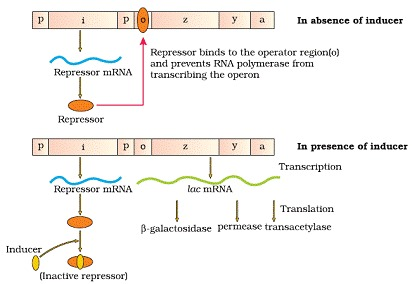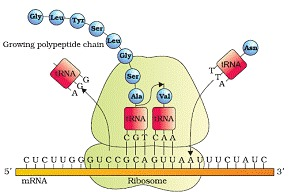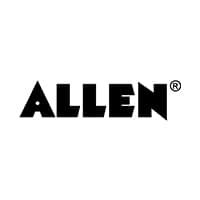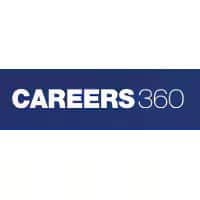NEET/JEE Coaching Scholarship
Get up to 90% Scholarship on Offline NEET/JEE coaching from top Institutes
The molecular basis of inheritance in class 12 biology helps students understand how traits are passed at the molecular level. This chapter explains important topics like DNA replication, transcription, translation and gene expression. The solutions provide clear explanations and step-by-step answers, making this complex biological process easier to learn. The chapter explains that DNA is the main genetic material in most organisms, while RNA also plays a role, especially in some viruses. Mainly, there are two types of nucleic acids found in living organisms. RNA mainly works as a messenger and helps in certain chemical reactions inside the cell.

As per the CBSE board, the pass percentage of girls has increased by 5.94 points this year.
| Gender | 2025 | 2024 |
| Girls |
91.64 | 91.52 |
| Boys |
85.70 | 85.12 |
| Transgender | 100.00 | 50.00 |
The Molecular Basis of Inheritance NCERT Solutions class 12 offers questions and answers based on the chapter. If you need detailed answers for other classes (6–12), NCERT solutions are available. These NCERT Solutions for class 12 provide the solutions to all the NCERT questions of class 12.
Students can get free PDFs of detailed answers to Chapter 5 from here:
Also Read,
Given below are the NCERT questions with detailed solutions of :
Q1. Group the following as nitrogenous bases and nucleosides:
Adenine, Cytidine, Thymine, Guanosine, Uracil and Cytosine.
Answer:
Nitrogenous bases- Adenine, thymine, uracil and cytosine
Nucleosides- Cytidine and guanosine
Q2. If a double-stranded DNA has 20 per cent of cytosine, calculate the per cent of adenine in the DNA.
Answer:
According to Chargaff's rule, A=T and G=C. As there are 20% cytosines, the guanine percentage will also be 20%. The G+C count is 20+20= 40%. Hence, the remaining 60% will be shared equally between adenine and thymine. So, the percentage of adenine and thymine are 30% each.
Q3. If the sequence of one strand of DNA is written as follows:
5'-ATGCATGCATGCATGCATGCATGCATGC-3'
Write down the sequence of the complementary strands in 5′→3′ direction.
Answer:
About base pairs, the DNA strands are complementary to each other. So, if the sequence of DNA is
5'-ATGCATGCATGCATGCATGCATGCATGC-3'
The sequence of the complementary strands will be
3`- TACGTACGTACGTACGTACGTACGTACG - 5`.
In the 5' - 3' strand, it can be written as
5'- GCATGCATGCATGCATGCATGCATGCAT-3'
Q4. If the sequence of the coding strand in a transcription unit is written as follows:
5'-ATGCATGCATGCATGCATGCATGCATGC-3'
Write down the sequence of mRNA.
Answer:
The sequence of mRNA is the same as the coding strand of DNA except that thymine is replaced by uracil. Thus, the sequence of mRNA will be
5' - AUGCAUGCAUGCAUGCAUGCAUGCAUGC - 3'.
Answer:
The characteristic of the DNA double helix that prompted Watson and Crick to speculate a semi-conservative mode of DNA replication is that the two DNA strands are antiparallel and complementary to one another in the sense of their base sequences. It follows from this organization that DNA replication is semiconservative. When replication occurs, the two strands separate, and each strand serves as a template for the production of a new strand. By the completion of replication, parental types and recombinant types of DNA are produced.
Answer:
Depending upon the chemical nature of the template (DNA or RNA) and the nature of nucleic acids synthesised from it (DNA or RNA), two types of nucleic acid polymerases are found
1. DNA-dependent DNA polymerase - It uses DNA as a template to synthesise new strands of DNA.
2. DNA-dependent RNA polymerase - It uses DNA as a template to synthesise RNA.
Answer:
Alfred Hershey and Martha Chase (1952) used a virus that infects bacteria, bacteriophages. They labeled DNA and protein with various radioactive isotopes. In their experiment, in one preparation, the protein component was rendered radioactive and in the other, nucleic acid (DNA) was rendered radioactive. These two phage preparations were permitted to infect the culture of E.coli.
As soon as after infection, prior to cell lysis, the E.coli cells were mildly shaken in a blender, loosening the attached phage particles and the culture was centrifuged. The denser infected bacterial cells were pelleted to the bottom and lighter viral particles were in the supernatant. When bacteriophage with radioactive DNA was used to infect E.coli, radioactivity was found in the pellet. If a bacteriophage with a radioactive protein coat was employed to infect E.coli, the radioactivity was present in most of the supernatant. They demonstrated in their experiment that protein does not enter the bacterial cell, whereas DNA gets transformed. Thus, they established that DNA is the genetic material.
Q8. Differentiate between the following:
(a) Repetitive DNA and Satellite DNA
Answer:
| Repetitive DNA | Satellite DNA |
| Repetitive DNA refers to DNA sequences containing small segments that are repeated many times | DNA sequences containing highly repetitive DNA. |
Answer:
| mRNA or messenger RNA | tRNA or transfer RNA |
| It acts as the template for the translation of proteins. | tRNA acts as the adapter molecule that carries specific amino acids to mRNA for the synthesis of a polypeptide. |
(c) Template strand and Coding strand
Answer:
| Template strand | Coding strand |
| It is the template for the synthesis of mRNA during transcription | Strand of DNA having the same sequence as mRNA (thymine in DNA is replaced by uracil in RNA |
| Its polarity is 3' to 5' | Its polarity is 5' to 3' |
Q9. List two essential roles of the ribosome during translation.
Answer:
The ribosome is a complex structure made up of ribonucleoproteins. It consists of two subunits i.e. a larger subunit and a smaller subunit. The essential roles of ribosomes during translation are as follows:
1. The ribosome acts as the site of protein synthesis. The larger subunit of the ribosome acts as an amino acid binding site, while the small subunit attaches to the mRNA.
2. The ribosome acts as a catalyst for forming peptide bonds.
Answer:
Lac operon is a piece of DNA that contains one regulatory gene (i ) and three structural genes (y,z and a). Of the three structural genes, the z gene specifies the enzyme beta-galactosidase that catalyzes the hydrolysis of the disaccharide lactose into galactose and glucose, its monomeric units.
Gene y specifies enzyme permease, which makes the cell more permeable. The gene a coded for the enzyme transacetylase. Lactose referred to as the inducer is the substrate for the enzyme beta-galactosidase and controls the turning on and off of the operon. The regulatory gene, i codes for the repressor of the lac operon.
Lactose can bind to the repressor and inactivate it. When lactose is attached to the repressor, the RNA polymerase attaches to the Lac Operon's promoter. Due to this, the transcription of three structural genes occurs and they develop their respective enzymes. In addition, these enzymes break down the lactose and result in the production of glucose and galactose. When lactose metabolism is at its maximum, repressor protein is released to bind with the operator gene. Due to this, the process of transcription of Lac Operon is arrested. Thus, Lac Operon shut down at some point after lactose addition to the medium.

Q11. Explain (in one or two lines) the function of the following:
Answer:
Function of promoter
The promoter gene refers to the site where the RNA polymerase enzyme binds and transcription of mRNA starts.
Answer:
Function of tRNA
tRNA plays a major role in the process of protein synthesis. It reads the genetic code present on mRNA.
Q12. Why is the Human Genome project called a mega project?
Answer:
The Human Genome project is called a mega project because its specific goal is to sequence every base pair in the human genome. HGP took approximately 13 years to accomplish in 2006. The main aim of HGP was to develop new technology and generate new information in genomic studies. Because of this project, many new areas have opened in genetics. Thus HGP is a mega project.
Q13. What is DNA fingerprinting? Mention its application.
Answer:
DNA fingerprinting is a very easy and quick way to compare the DNA sequence of any two individuals. It includes identifying differences in some specific regions in DNA sequences called repetitive DNA sequences. In these regions, a small stretch of DNA is repeated many times and they are specific for every individual. The technique of fingerprinting was initially developed by Alec Jeffrey.
Applications of DNA Fingerprinting
1. It is used in forensic science to identify individuals.
2. It can be used to establish paternity or maternity-related disputes.
3. DNA fingerprinting is used to establish evolutionary relationships between organisms.
Q14. Briefly describe the following:
Answer:
It is the process of replication of genetic information from a strand of DNA into mRNA. Transcription involves only one strand that is replicated into the RNA. During replication, the adenine position is occupied by uracil. DNA transcription contains a transcription unit. The transcription unit has a promoter, the structural gene and a terminator. The 3'-5' polarity strands serve as a template and are referred to as template strands whereas the other strand is referred to as coding strands. A schematic organization of a transcription unit is represented below.

The promoter is located at the 5’ end and it binds the enzyme RNA polymerase to start transcription. The sigma factor also helps in the initiation of the process of transcription. The terminator is located at 3’end of the coding strand and usually defines the end of transcription where the rho factor will bind to terminate transcription.
Answer:
Polymorphism- It refers to a special kind of genetic variation in which nucleotide sequence can exist at a particular site in a DNA molecule. This heritable mutation is caused by a mutation in either the somatic cell or the germ cell. It ultimately results in the accumulation of various mutations at one site. Polymorphism brings revolution in the process of finding a location on the chromosome for disease-associated sequences and tracing human history.
14. (c) Translation
Answer:
Translation- The process of amino acid polymerisation to form a polypeptide chain is called translation. The sequence and order of the amino acids within a polypeptide chain rely on the sequence of mRNA. Translation consists of three steps, i.e. initiation, elongation and termination. In the process of initiation, the ribosome attaches at the beginning codon, which is AUG. Ribosomes then continue to travel codon by codon along the mRNA to add onto the polypeptide chain. Ultimately, the release factors recognize the stop codon, which results in the end of translation and release of the polypeptide from the ribosome.

Bioinformatics- It is a recent and very effective area in the field of biology. In this discipline, the knowledge from the DNA sequences is used for solving various doubts regarding organisms which can not be studied on them in real-time. Therefore, we can say that we utilize the biological information stored in the DNA of an organism.
Also Check NCERT Books and NCERT Syllabus here:
Below are a few solved practice questions:
Q1. In a DNA strand, the nucleotides are linked together by:
Options:
1. Glycosidic bonds
2. Phosphodiester bonds
3. Peptide bonds
4. Hydrogen bonds
Answer:
In a DNA molecule, nucleotides are joined through phosphodiester bonds, which are crucial covalent connections between the 3'-hydroxyl group of sugar in one nucleotide and the 5'-phosphate group of the sugar in the next.
This bonding pattern generates the DNA's sugar-phosphate backbone, ensuring a clear directionality from 5' to 3' ends. The significance of these bonds lies in their contribution to DNA's structural integrity and facilitation of nucleotide chain elongation.
Hence, the correct answer is option 2) Phosphodiester bonds.
NCERT Solutions for Class 12- Subject-wise
| NCERT Solutions for Class 12 Maths |
| NCERT Solutions for Class 12 Chemistry |
| NCERT Solutions for Class 12 Biology |
| NCERT Solutions for Class 12 Physics |
To solve the questions effectively, one needs to understand the concepts clearly first. The chapter has certain key terms, such as replication, transcription, translation and operon. Making notes of the chapter is really important by highlighting all the important points and terms. The Molecular Basis of Inheritance NCERT Solutions has all the solved exercise questions, with to-the-point answers and necessary information. Students should definitely practice these solutions to have an overall idea of the chapter and build confidence before the exams.
NCERT Exemplar Class 12 Solutions
| NCERT Exemplar Class 12 Chemistry Solutions |
| NCERT Exemplar Class 12 Mathematics Solutions |
| NCERT Exemplar Class 12 Biology Solutions |
| NCERT Exemplar Class 12 Physics Solutions |
As per latest 2024 syllabus. Maths formulas, equations, & theorems of class 11 & 12th chapters
Studying concepts beyond the NCERT will definitely help in attaining conceptual clarity and will help answer application-based questions, especially for competitive exams or school exams. Some extra concepts that can be studied are:
Topics | NEET | NCERT |
✅ | ✅ | |
✅ | ✅ | |
✅ | ✅ | |
✅ | ☐ | |
✅ | ✅ | |
✅ | ✅ | |
✅ | ✅ | |
✅ | ✅ | |
✅ | ✅ | |
✅ | ✅ | |
✅ | ✅ | |
✅ | ✅ | |
✅ | ✅ | |
✅ | ✅ | |
✅ | ✅ | |
✅ | ✅ | |
✅ | ✅ | |
✅ | ✅ | |
✅ | ✅ | |
✅ | ✅ | |
✅ | ✅ | |
✅ | ✅ | |
✅ | ✅ | |
✅ | ✅ | |
✅ | ✅ | |
✅ | ✅ | |
✅ | ✅ | |
✅ | ✅ | |
✅ | ✅ | |
✅ | ✅ | |
✅ | ✅ |
Below mentioned are the chapter-wise solutions:
DNA structure and replication
RNA and its types
Transcription, translation, and genetic code
Regulation of gene expression
Human Genome Project and DNA fingerprinting
NCERT solutions are available in official NCERT books, educational websites, and platforms like Careers360.
The central dogma states that genetic information flows from DNA → RNA → Protein, describing the processes of transcription and translation.
DNA replication is semi-conservative, where each strand serves as a template. Enzymes like DNA helicase, DNA polymerase, and ligase assist in unwinding, copying, and sealing the DNA strands.
Transcription: Formation of mRNA from DNA inside the nucleus.
Translation: Conversion of mRNA sequence into a protein at ribosomes.
mRNA: Carries genetic code from DNA to ribosomes.
tRNA: Brings amino acids for protein synthesis.
rRNA: Forms the ribosome structure and helps in translation.
Prokaryotes: Operon model (e.g., lac operon) regulates gene expression.
Eukaryotes: Gene expression is regulated at multiple levels (transcription, RNA processing, translation).
DNA: Double-stranded, contains deoxyribose sugar, has thymine (T).
RNA: Single-stranded, contains ribose sugar, has uracil (U) instead of thymine.
Mutations are sudden changes in DNA sequence that can be harmful, beneficial, or neutral, affecting genetic traits and possibly leading to diseases like cancer.
The genetic code is a set of three-letter codons in mRNA that specify which amino acids will be assembled into a protein during translation.
Admit Card Date:17 April,2025 - 17 May,2025
Admit Card Date:06 May,2025 - 20 May,2025
Changing from the CBSE board to the Odisha CHSE in Class 12 is generally difficult and often not ideal due to differences in syllabi and examination structures. Most boards, including Odisha CHSE , do not recommend switching in the final year of schooling. It is crucial to consult both CBSE and Odisha CHSE authorities for specific policies, but making such a change earlier is advisable to prevent academic complications.
Hello there! Thanks for reaching out to us at Careers360.
Ah, you're looking for CBSE quarterly question papers for mathematics, right? Those can be super helpful for exam prep.
Unfortunately, CBSE doesn't officially release quarterly papers - they mainly put out sample papers and previous years' board exam papers. But don't worry, there are still some good options to help you practice!
Have you checked out the CBSE sample papers on their official website? Those are usually pretty close to the actual exam format. You could also look into previous years' board exam papers - they're great for getting a feel for the types of questions that might come up.
If you're after more practice material, some textbook publishers release their own mock papers which can be useful too.
Let me know if you need any other tips for your math prep. Good luck with your studies!
It's understandable to feel disheartened after facing a compartment exam, especially when you've invested significant effort. However, it's important to remember that setbacks are a part of life, and they can be opportunities for growth.
Possible steps:
Re-evaluate Your Study Strategies:
Consider Professional Help:
Explore Alternative Options:
Focus on NEET 2025 Preparation:
Seek Support:
Remember: This is a temporary setback. With the right approach and perseverance, you can overcome this challenge and achieve your goals.
I hope this information helps you.
Hi,
Qualifications:
Age: As of the last registration date, you must be between the ages of 16 and 40.
Qualification: You must have graduated from an accredited board or at least passed the tenth grade. Higher qualifications are also accepted, such as a diploma, postgraduate degree, graduation, or 11th or 12th grade.
How to Apply:
Get the Medhavi app by visiting the Google Play Store.
Register: In the app, create an account.
Examine Notification: Examine the comprehensive notification on the scholarship examination.
Sign up to Take the Test: Finish the app's registration process.
Examine: The Medhavi app allows you to take the exam from the comfort of your home.
Get Results: In just two days, the results are made public.
Verification of Documents: Provide the required paperwork and bank account information for validation.
Get Scholarship: Following a successful verification process, the scholarship will be given. You need to have at least passed the 10th grade/matriculation scholarship amount will be transferred directly to your bank account.
Scholarship Details:
Type A: For candidates scoring 60% or above in the exam.
Type B: For candidates scoring between 50% and 60%.
Type C: For candidates scoring between 40% and 50%.
Cash Scholarship:
Scholarships can range from Rs. 2,000 to Rs. 18,000 per month, depending on the marks obtained and the type of scholarship exam (SAKSHAM, SWABHIMAN, SAMADHAN, etc.).
Since you already have a 12th grade qualification with 84%, you meet the qualification criteria and are eligible to apply for the Medhavi Scholarship exam. Make sure to prepare well for the exam to maximize your chances of receiving a higher scholarship.
Hope you find this useful!
hello mahima,
If you have uploaded screenshot of your 12th board result taken from CBSE official website,there won,t be a problem with that.If the screenshot that you have uploaded is clear and legible. It should display your name, roll number, marks obtained, and any other relevant details in a readable forma.ALSO, the screenshot clearly show it is from the official CBSE results portal.
hope this helps.

Register for ALLEN Scholarship Test & get up to 90% Scholarship

Get up to 90% Scholarship on Offline NEET/JEE coaching from top Institutes

This ebook serves as a valuable study guide for NEET 2025 exam.

This e-book offers NEET PYQ and serves as an indispensable NEET study material.
As per latest 2024 syllabus. Physics formulas, equations, & laws of class 11 & 12th chapters
As per latest 2024 syllabus. Chemistry formulas, equations, & laws of class 11 & 12th chapters